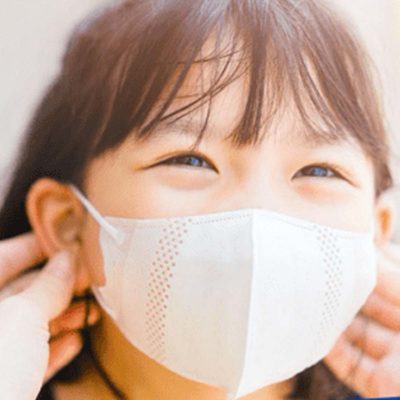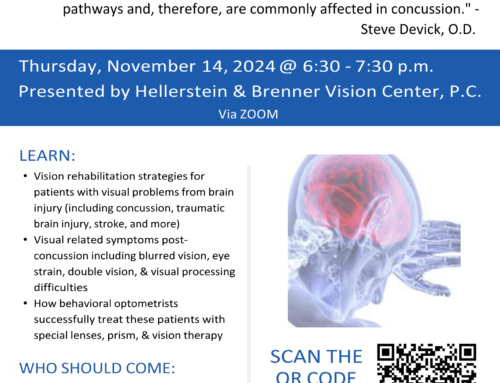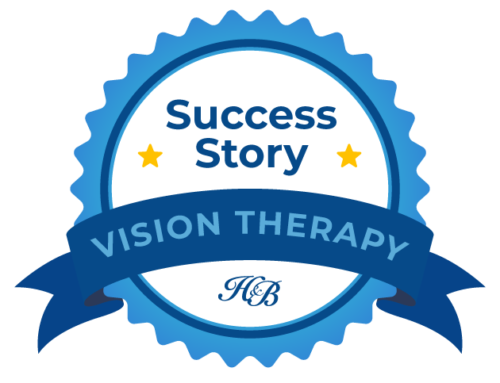 Is your child’s visual system ready to take on this new and unique academic year?
Is your child’s visual system ready to take on this new and unique academic year?
The new year is kicking off with a baseline of caution, anxiety, and an ever-changing game plan during this global pandemic…
But we can help prepare your student as Hellerstein & Brenner Vision Center doctors are recommending the all students (K through college) get a comprehensive eye examination to address any vision issues that could make learning more difficult this year. This is a proactive step that could eliminate additional stress and learning difficulties.
A properly functioning visual system is more than just 20/20 acuity. In fact, clarity of vision is only one of the seventeen visual skills necessary for efficient learning. With 80% of learning happening through your child’s eyes, a comprehensive eye examination should be one of the most important things on your child’s back to school list.
Visual processing difficulties can lead to obstacles in academics, sports, and proper development. As such, struggles in school may be the result of a deficient visual system. A comprehensive examination at Hellerstein & Brenner Vision Center, P.C. will go beyond assessing clarity of vision and eye health, but will also dive into your child’s functionality of vision. This will include all seventeen visual skills such as eye tracking, eye focusing, depth perception, and eye teaming. There is successful treatment for patients with visual deficits that address functionality of vision such as corrective lenses and vision therapy.
Let’s prepare your child to reach his/her full potential.
VISUAL SKILLS ESSENTIAL FOR LEARNING:
- Good visual acuity at all distances
- Eye tracking skills
- Eye movement skills
- Eye teaming skills
- Eye focusing skills
If your child is already experiencing learning difficulties and has one or more of the below listed symptoms, they may have a learning-related vision problem. It’s recommended that the child has a comprehensive evaluation by an eye doctor who specializes in children’s vision and learning-related vision problems.
SYMPTOMS OF LEARNING-RELATE VISION PROBLEMS*:
- Headaches or eye strain
- Blurred vision or double vision
- Crossed eyes or eyes that appear to move independently of each other (Read more about strabismus.)
- Dislike or avoidance of reading and close work
- Short attention span during visual tasks
- Turning or tilting the head to use one eye only, or closing or covering one eye
- Placing the head very close to the book or desk when reading or writing
- Excessive blinking or rubbing the eyes
- Losing place while reading, or using a finger as a guide
- Slow reading speed or poor reading comprehension
- Difficulty remembering what was read
- Omitting or repeating words, or confusing similar words
- Persistent reversal of words or letters (after second grade)
- Difficulty remembering, identifying or reproducing shapes
- Poor eye-hand coordination
- Evidence of developmental immaturity
*Symptoms list created by Think About Your Eyes, April 2017
TOP 6 WAYS TO PREPARE FOR SCHOOL IN A PANDEMIC
- ASSESS YOUR STUDENT’S VISION & EYE HEALTH:
It’s highly recommended that each student gets a comprehensive eye exam, every year. It’s even more important this year as children are experiencing increased stress, anxiety, countless lifestyle changes and more screen time than ever. This can be a recipe for vision changes that can impact learning if they aren’t addressed.
A comprehensive eye exam gives the patient and doctor a look at overall physical health in addition to eye health. Optometrists are often able to diagnose general health and eye health conditions before symptoms occur. This makes early intervention and treatment possible before vision and learning is heavily impacted.
“It’s so important for each student to get their eyes checked as part of supporting their learning. It’s especially important to rule out a visual issue if your child is struggling with reading, headaches, coordination, blurry vision, double vision, or dry eyes. With the recent screen time increases, we want to make sure that student eye health is not a problem for the school year,” says Tom Cruse, President at Colorado Optometric Association. - CREATE A FAMILY STRESS MANAGEMENT PLAN:
- Eye twitching, blurry vision, headaches, watery eyes or dry eyes can all be caused by stress. In fact, stress can cause vision issues and vision issues can cause stress. Don’t get caught in this cycle!
- This year, there are a lot of new stressors for students beyond learning and homework. Having a stress management plan for each person in the home will help everyone stay happy, healthy, learning, and working.
- It’s a good idea to start talking to your student about what their school day will look like and prepare them for the things that are changing.
- Reflecting on the questions and statements below can help you get your family stress management plan in place. You can then build a daily schedule and house rules around each family member that helps find success in their day.
- How does my student handle life changes and daily transitions?
- Do they need advanced notice?
- Do they need multiple discussions on the changes?
- Do they need time to process and adjust to the change?
- Do they need reassurance?
- Do they need space to process?
- How does my student feel comforted and supported?
- Quality time?
- Validation?
- Reassurance?
- Physical affection?
- Have you addressed your child’s concerns and questions about school?
- Do you have a time, place and person(s) for your student to talk about things when they are worried?
- What activities does my student need to do daily to feel content with their day?
- Reading?
- Crafts?
- Sports?
- Quality time with a parent?
- Time outside?
- Free play?
- What level of news coverage is healthy for your student and each member of the household?
- Does watching/discussing the news in front of your student impact them positively or negatively?
- What kind of help, self-care or tools do you need as a parent to be a healthy support for your child’s education?
- Your own time and space for self-care?
- Open communication with family and friends?
- Social media breaks?
- New boundaries with family and friends?
- How does my student handle life changes and daily transitions?
- ASSURE YOUR STUDENT IS EATING WELL:
The food we eat can impact how we feel emotionally and physically. Food also impacts our eye health. Children’s eating habits can change as they experience stress and as daily schedules change. When some people experience stress they eat less and others eat more. What is healthy and effective for your student?Making sure your child is eating enough breakfast, lunch, and dinner is helpful. Or maybe they aren’t into full meals right now so making sure they are grazing throughout the day will help keep blood sugar balanced, stress low, and it also can mean less tantrums or moodiness.10 Nutrient Dense Foods to keep eyes healthy and brains learning:- Fish is rich in omega-3 fatty acids
- Nuts and legumes are rich in omega-3 fatty acids and vitamin E
- Seeds are rich in omega-3 fatty acids and vitamin E
- Citrus fruits rich in vitamin C
- Leafy greens rich in lutein and zeaxanthin
- Carrots rich in vitamin A and beta carotene
- Sweet potatoes rich in beta carotene and vitamin E
- Beef is rich in zinc
- Eggs rich in lutein and zeaxanthin
- Water prevents dehydration and keeps your brain running
- DETERMINE HOW MUCH EXERCISE YOUR STUDENT NEEDS:
Exercise increases blood flow to the optic nerve and retina, reduces stress, improves alertness, motivation, attention and it even helps us retain information.We all know that when schedules change one of the first things to cease is healthy exercise. Whether attending school in-person or online how will your child get the exercise they need to thrive? How can you use exercise as a tool during the school year? Some families have students jump on a mini-trampoline or do jumping jacks before tackling homework or a school lesson. Others use it as a motivational reward. What works for your student? Tips for getting kids to exercise.The Centers for Disease Control and Prevention (CDC) recommends the following activity levels for:- Children ages 3-5 years should have active play throughout the day.
- Children ages 6-17 should have one hour of moderate to vigorous physical activity daily. Including;
- activities to strengthen bones 3 days per week (ex: running or jumping)
- activities to build muscles 3 days per week (ex: climbing or push- ups
- ADDRESS SLEEP DIFFICULTIES:
Dark circles around their eyes, moodiness, fatigue, difficulty learning, forgetfulness, and lack of motivation are all common signs of poor sleep. Poor sleep is not conducive to a successful learning environment and it can also strain family relationships. It’s a good idea to address everyone’s sleep issues in the household for optimal learning, working, playing and relating.Sleep is clearly important for everyone and your student is no exception. It’s also very common for sleep to be impacted by stress and anxiety. Improving sleep could be as simple as better sleep hygiene, a new pillow, reducing stress or eliminating screen time before bed. However, sometimes there’s an actual health issue at play. If sleep doesn’t get better with common sense adjustments and is impacting daily life (like school) it’s time to consult a doctor.During a comprehensive eye exam an optometrist may spot signs of sleep issues including sleep apnea or other health conditions that are associated with sleep difficulties like pediatric myopia, diabetes, glaucoma, or an autoimmune disease.- The CDC recommends the following sleep quantity for:
- Ages 3-5 years: 10-13 hours per 24 hours (including naps)
- Ages 6-12 years: 9–12 hours per 24 hours
- Ages 13-18 years: 8–10 hours per 24 hours
- Tips to Improve Sleep:
- Stick to a sleep schedule where you go to bed at the same time and wake at the same time even on the weekends.
- Remove screens from the bedroom including phones, TVs, and tablets.
- Stop the use of any screen one hour before bedtime to reduce blue light exposure.
- Make sure your child’s sleep environment is comfortable for them and includes their unique sleep preferences.
- Avoid caffeine in the afternoon and before bed.
- Make sure your child is getting enough exercise during the day.
- The CDC recommends the following sleep quantity for:
- TOP 5 TIPS for VISUAL HYGIENE EFFICIENCY, & RELAXATION:
Now more than ever we are on our digital devices out of necessity for work, online school, and entertainment. This increased demand on our visual system is one of the many reasons that it is so important to continue to address and recognize visual symptoms and strain. These TOP 5 TIPS for VISUAL HYGIENE EFFICIENCY, & RELAXATION can help to reduce the strain many experience and keep us all preforming and living at our greatest potential.
THANKS to 2020EYESCOLORADO.ORG for the IMPORTANT ACADEMIC PANDEMIC PREP!
As always, we are here to support you and your visual needs. Please reach out if you have any questions.





